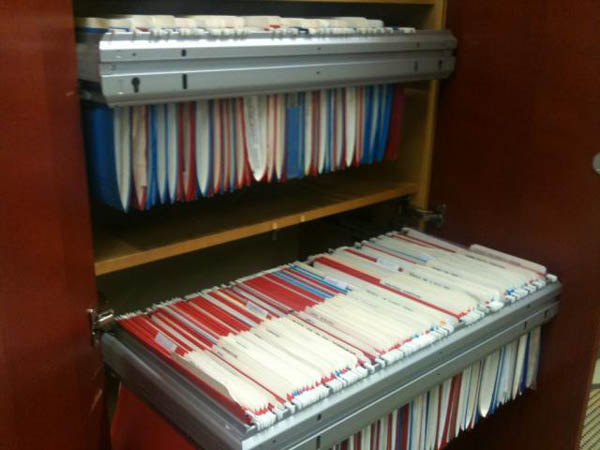One of the most pressing issues in today’s radically changing work environment is managing and storing information. The trend towards smaller personal work spaces or home offices adopted by majority of small businesses in the US creates the problem of finding more efficient ways of filing and storing. For most home offices whose every square inch of space is precious, de-cluttering your office from files, supplies, resource materials and piles of paper is of prime importance.
Although piles on your work area remind you that you are still working even at the comforts of your home, a desk overrun by these could be nerve-racking. Studies show that cluttered office spaces causes stress and should be immediately eliminated. These visual noises stifle and get in the way of productive thought, and may even cause disharmony and argument over misplaced important documents.
The uptake in technological advancements introduced digital alternatives to paper clutter. Documents can now be scanned, stored in electronic format in personal computers, laptops and removable disks and drives, sent and received through the Internet. However, those documents that are most important and are used on a daily basis should be arranged and stored in another location.
This is where file cabinets come in. The need for file and paperwork organization has made file cabinets staple to small and enterprise-sized businesses alike. Filing cabinets come in two types—lateral and vertical—and all types of materials. Whichever you prefer and purchase should depend largely on your office setup.

Here are three important things to consider when organizing your filing cabinet:
Type and size of the documents to be filed
It is important to know the measurement of the depth and width of your filing cabinet to see what will accommodate your paperwork—letter size or legal size documents. Drawer weight should also be considered because the amount of documents to be stored should not go beyond the maximum weight that can be taken by each drawer.
Lateral filing cabinets can accommodate both letter size and legal documents arranged horizontally and have a storage capacity more than vertical file cabinets. Traditional vertical cabinets on the other hand are designed to store letter sized papers arranged from front to the back.
Office floor space available
Most home offices have limited floor space. Lateral filing cabinets have wider drawers than vertical ones. Although these allow easy view and inventory of the entire contents of the drawer, they take up significantly more floor space. Vertical filing cabinets meanwhile save up a lot of floor space as these are tall and narrow cabinets that are usually placed against the wall.
Filing system in use
A well planned filing system significantly contributes to the efficiency of having a filing cabinet in your home office. Your record-keeping system should begin with an inventory of your documents to be followed by inspecting and marking your files, doing a follow-up and cross-reference, sorting and filing your papers.
Filing methods, which have individual advantages and disadvantages, include: alphabetical, numeric, geographic, subject and chronological.

